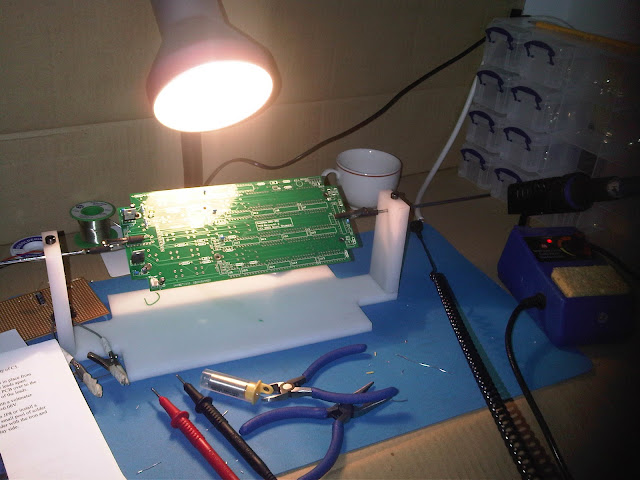Got round to removing the engine and gearbox from the donor 540i, 4.4L V8.
Heater matrix connections removed
Fuel lines removed, these connections were removed using a piece of those metallic wraps that are used to hide the water pipes going into a household radiator. The wrap is placed around the rigid line and then pressed into the socket, depressing the fingers inside and disconnecting the fitting.
Disconnecting the prop shaft from the gearbox was a bit of a nuisance as not all the bolts are accessible in one go. The car was on axle stands at the front and still on its rear wheels and by this point we had already left the gearbox in park and removed the selector linkage, so we had to reconnect the linkage to get the box into neutral (rather than guess the position at the box) and lift the back of the car off the ground and turn the wheels to get the prop shaft to rotate so we could disconnect it.
The car was positioned where there was the most room to get in underneath from the sides, and working on gravel meant we had to lay down a surface to roll the crane on
Up to this point we were planning to use some woven straps and rope to attach the engine to the crane. The location of the lifting eyes meant that the line would have to be vertical, or would otherwise it would 'pull in' and crush some expensive parts. We ended up on a mad dash to Machinemart in Twickenham to get hold of a load balancer and some proper shackles, we got there at 5:28 (due to close at 5:30!)
There was on and off torrential rain over the weekend so a tarp was set up to make some form of continued work possible.
We started the removal by removing the gearbox support, then the front mounts. Using the crane we raised the engine and used the balancer to prevent the load from listing side to side.
Things got a bit easier after we separated the gearbox from the propshaft as we could now tilt the load to get it over the front subframe.
The right hand rear exhaust header was stopping the engine coming out any further forward as it was hitting the steering column and rack, so as access was good with the engine lifted we just removed that header, fortunately the exhaust nuts were all in great condition and came off with no problems
With the engine and transmission clear of the bay we rolled it into the shed.
Taa
Pete


















































